Subaru has done a great job balancing the comfort/luxury value against the brand’s go-anywhere, get muddy, hose-it-out-later reputation.

Subaru knows a good thing when it makes it, and the 2025 Forester keeps to the winning formula that makes it a top seller.
The Subaru Forester has been one of the most popular crossovers in America since its introduction in the late 1990s. Of course, back then it was more of a compact wagon, and no one really used the term “crossover” yet. But the formula of a long roof, plenty of interior space, and all-wheel drive in an affordable package that wasn’t based on a truck was an instant hit. The Forester has remained as Subaru’s bread-and-butter crossover for almost 30 years.
Overview
The 2025 Forester remains true to the Forester Formula, which is a four-door tall wagon with ample cargo space and the driving dynamics of a passenger car rather than a top-heavy SUV. The new Forester also remains affordable, starting just under $30,000 with an attractive standard feature set.
First on the list is Subaru’s symmetrical all-wheel drive, which makes the Forester a big seller in places like the Pacific Northwest, Colorado, the upper Midwest, and New England. But as you’ll see, the new Forester is also a technology-centered vehicle, and a great choice for family use.
Exterior

All Forester models feature the brand’s workhorse 2.5-liter horizontally opposed four-cylinder engine, rated at 180 horsepower and 178 pound-feet of torque.
The next-generation Forester is all-new for 2025. This is the usual industry-speak for a revised chassis platform and new bodywork. The new Forester has that and uses a great deal more of the industrial adhesive that works every bit as well as a spot-weld.
As always, the new chassis has benefitted from research and development, so it’s stiffer, better in a crash, quieter, and so on. From the outside, the Forester looks good enough – it’s a crossover SUV, so no one expects anything too far outside the mainstream.
Interior
Inside, Subaru has done a great job balancing the comfort/luxury value against the brand’s go-anywhere, get muddy, hose-it-out-later reputation. Depending on the trim level, you can have easy-to-clean synthetic upholstery or real leather.
Cargo areas come with removable (and hosable) mats. But overall, the new interior is quieter, the seats are comfortable, and this is a car you can slide into for the first time and it feels like an old friend.

Most trims include a large tablet-style 11.6-inch touchscreen multimedia infotainment system with integrated center information display.
Powertrain
Subaru outfits the Forester with just one driveline – a 2.5-liter naturally aspirated boxer four-cylinder making 180 horsepower and 178 lb-ft of torque. That’s paired with an advanced CVT and the AWD system. In the higher trims you get advanced X-Drive, with modes for various difficult terrains, but it’s all done by computer. The only parts difference is you can get paddle shifters in the top trims.
On the road, the Forester has adequate power. It’s not really fast, but it gets the job done. If you want more power, walk across the dealer lot and look at an Outback or a WRX. Towing capacity is a modest 1,500 pounds, which is enough for a tiny camper or utility trailer.
Safety and Technology
The National Highway Traffic Safety Administration gives the current 2024 Forester a five-star crash test rating, and the Insurance Institute for Highway Safety rates the Forester as a “Top Safety Pick,” and this has been consistent for over a decade. They haven’t rated the 2025 Forester yet, but there’s every reason to expect it to continue as a safety standout.
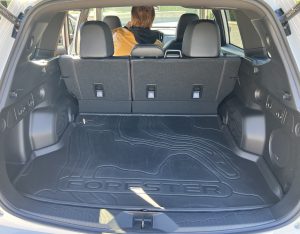
Subaru declined to give the Forester the kind of fastback profile that is popular, keeping the two-box utility and 74.4 cubic feet of cargo space.
The 2025 Forester has updated all the safety and driver assistance tech, with the latest version of Subaru’s EyeSight automatic emergency braking and adaptive cruise control system. Additionally, you can get a long list of helpful features in the various trim levels, including a surround-view camera, camera-based rear-view mirror, automatic evasive steering, and so on.
On the dash, only the base trim has a pair of twin 7-inch screens. Every other trim uses an 11.6-inch touchscreen, oriented vertically like a tablet. There’s support for wireless Android and Apple phone integration, an available wireless charging pad, and all the usual array of USB-A and USB-C ports.
Driving Impressions
On the road, the new Forester does exactly what you expect from a Forester – it’s stable, quiet, confident, and has decent power. This is a car that’s pleasant to drive every day, especially if you buy up the trim ladder and get heated and ventilated seats and a heated wheel. There are no annoying or dangerous aspects to this vehicle.
When you get off the paved road, that’s where the Forester really shines. We went up to the high country of Montana for our test drive, and we ran the test car through deep snow, mud, up and down steep hills, over rocks, and basically every kind of challenge, and we did it on summer tires. The Forester didn’t care at all. We engaged X-Mode for the deep snow, but I don’t think we really needed to do that. The Forester just makes steady progress no matter what.
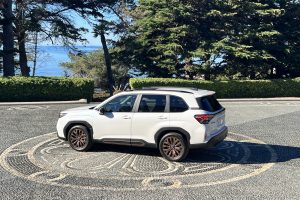
The body protective cladding around the sills and a prominent grille emphasize Subaru’s off-road chops.
Wrap Up
As mentioned, the base Forester starts at $29,695, and there are incremental price increases for Premium, Sport, Limited, and Touring Trim, which is a bit more than $10,000 more at $39,995. Our test vehicle was the modest Premium trim at $31,995, but you get the big touchscreen, X-Mode, heated front seats, and a panoramic moonroof.
Subaru expects Premium to be a popular trim. Sport trim retails at $34,495 and is mostly a visual package, but you do get the easy-clean StarTex upholstery. The X-Mode in Sport trim is upgraded to a dual-mode system, and you get blind spot monitoring and automatic emergency steering. Just a little bit more gets you Limited trim for $35,995, with more luxury features, and the top Touring trim includes heated and ventilated leather seats, heated second row, and much more.
The popular Wilderness trim hasn’t been released yet, and Subaru plans to keep selling the 2024 Forester Wilderness until the new model’s Wilderness package is complete.
The bottom line is simple: If you liked any past Forester, you’re likely to love the new generation. The value is there, the functionality and capability is there. If we were buying, we’d wait for the Wilderness trim, which is likely to be excellent, but any trim level is a good choice.

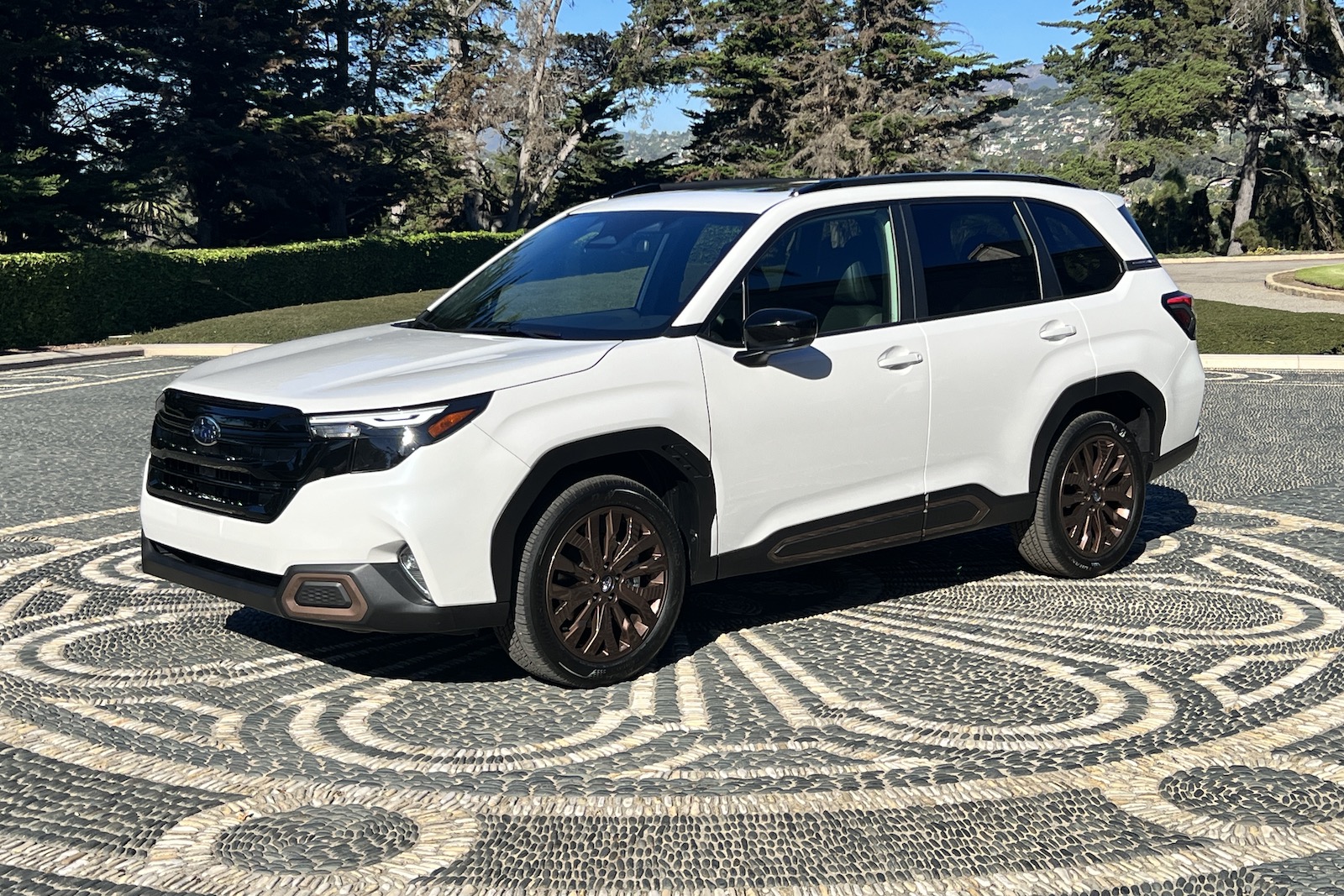
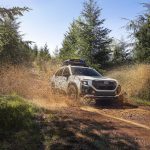


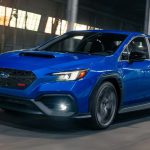
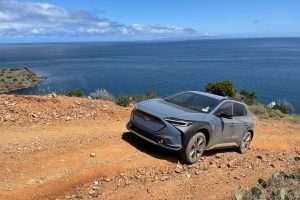

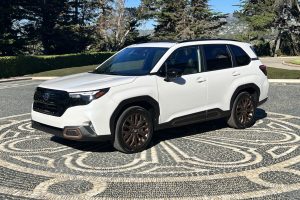
0 Comments